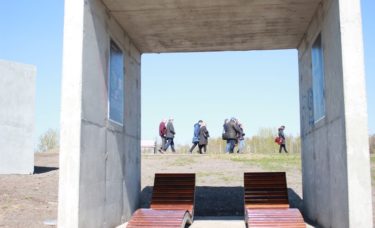
An international conference closing the three-year’s LUMAT project
On the 15-16 of April 2019 an international conference closing the three-year’s LUMAT project was held. The aim of the final conference was to sum up and evaluate the project outcomes. It was also an opportunity to discuss current problems of spatial management in functional urban areas with space as an environmental resource.
Contemporary cities, especially Central European ones, face challenges such as urban sprawl, surface sealing, presence of degraded areas or the need to protect natural values created spontaneously in degraded areas. Furthermore, the administrative boundaries of the cities no longer reflect the physical, environmental, social or cultural links in the city. The so-called urban functional areas (FUAs), are formed, i.e. spatially continuous settlement systems composed of separate administrative units, covering a compact urban area and functionally connected urban areas.
Solving urban functional area (FUA) problems is a challenge for the city authorities, whose areas are within them, because FUAs are not formal administrative structures. They require - apart from an integrated approach to project planning and implementation - the creation of partnerships involving entities at various management levels, which are able to implement these projects.
During the conference a panel discussion with the participation of representatives of government and local government administration of Poland and Germany, as well as a panel with the participation of project partners took place. The discussion focused on the needs and challenges urban areas must face in the context of climate change and the still existing degraded areas threatening the health of residents and occupying valuable space in city centres. The solutions proposed under the project and their usefulness for other areas were also discussed.
During the conference the results of a photo contest organised by Italian partners from the LINKS Institute in Turin were announced. The second prize in the contest went to Marta Fudała from IETU.
On the second day of the conference the participants visited the site of the investment realised under the project on the area of a zinc spoil heap in Ruda Śląska. A park and a recreation area was created there with numerous attractions such as: playground, outdoor gym, viewpoint, area for extreme BMX rallies, barbecue sites and sports ground.
More information about the project can be found at: https://www.interreg-central.eu/Content.Node/LUMAT.html
Agenda of LUMAT final conference
PRESENTATION:
3. Presentation of the project PHOTOCONTEST results, prize distribution, Matteo Tabasso, Italy
6. Representative of Ministry of Environment Szymon Tumielewicz, Ministry of Environment, Poland
Presentation of the project pilot areas
2. Trnava – Tomas Gunis, City of Trnava, Slovakia
3. Saxony – Karl Eckert, Saxon State Office for Environment, Agriculture and Geology, Germany
4. Torino – Irene Mortari, Stefania Grasso, Metropolitan City of Torino, Italy
5. Voitsberg – Anton Schabl, Energy Centre, Austria
7. Kranj – Janez Ziherl City of Kranj, Slovenia
More infomartin about the LUMAT project https://www.interreg-central.eu/Content.Node/LUMAT.html
LUMAT is an international project under which in the last three years 13 partners from Austria, the Czech Republic, Germany, Poland, Slovakia, Slovenia and Italy developed environmental and planning tools as well as practical solutions (the so-called “action plans”) supporting the management of space resources as a component of the environment.
The LUMAT project is co-financed by the INTERREG Central Europe Programme. The project coordinator is the Institute for Ecology of Industrial Areas in Katowice.












